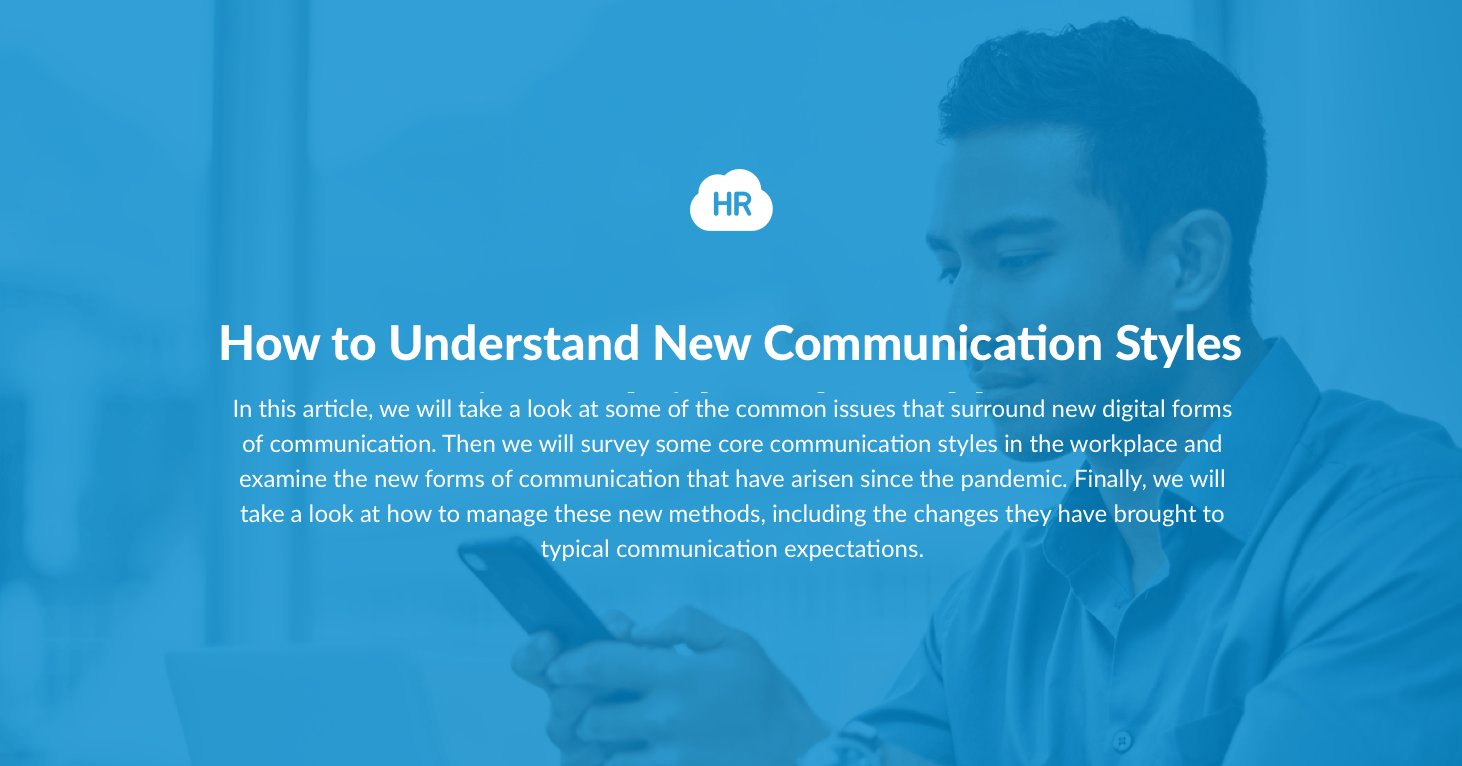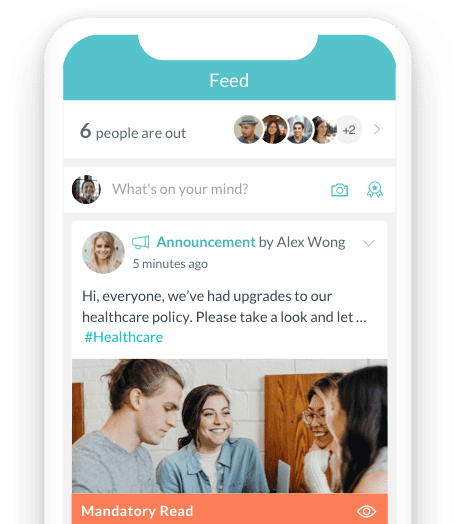How to Understand New Communication Styles in a Hybrid Work World

Let Us Help You Engage Your Employees!
Onboard New Hires Safely, Efficiently, and Effectively.
Are You Interested in Improving Your HR Organization?
Since the global coronavirus pandemic, the way we understand work has fundamentally shifted. With offices shuttered for safety, people’s work spaces have become rooms in their homes, desks in co-working spaces, and anywhere else with a trusty Wi-fi connection. Now that offices are reopening, hybrid work is the new name of the game.
With companies split between in person and remote employees, communication can become complicated very quickly. A new working style means new modes of communication are necessary to ensure that every employee, whether in office or at home, feels included, valued, and clear about company and task expectations.
So how can you understand the new communication styles necessary in a hybrid work world? In this article, we will take a look at some of the common issues that surround new digital forms of communication. Then we will survey some core communication styles in the workplace and examine the new forms of communication that have arisen since the pandemic. Finally, we will take a look at how to manage these new methods, including the changes they have brought to typical communication expectations.
Common Issues With Digital Communication
Technology can be an incredible asset in many ways, allowing us to connect instantaneously with friends, family members, and colleagues from anywhere in the world. But when it comes to workplace communication, this can lead to some issues. In the past, when all employees were located in one office building, it would have been easy to simply stop by someone’s desk to ask a simple question.
Now, however, employees and managers alike are having to adjust to a new way of working with communication formats and with timeliness when it comes to workplace communication.

Asynchronous Communication
Having a conversation in real time is an example of “synchronous communication”, in which the questions, answers, and content of the conversation happen in real time all at once. Since hybrid work often includes overseas or out of state employees, navigating different time zones becomes a tricky additional element in even the simplest of online conversations.
Team managers and HR leaders need to help shift every employee’s expectations around response times in order to accommodate employees in different time zones. Asynchronous communication is the new name of the game, which means that projects can take a bit longer as each team member must wait to have their question answered. If some employees live on the other side of the globe, then their working hours may be opposite to other employees’. This means that some questions may not be answered until the following workday, one of the major pitfalls of asynchronous communication.
Multiple Methods of Communication
Another tricky issue can be determining which tool of communication is most appropriate for any given conversation or context. Between text messages, emails, and various remote work platforms, there are seemingly countless options for getting in touch with a colleague. But this many options can lead to chaotic communication, with message chains jumping from platform to platform, the result of which is that valuable information gets lost in between.
Again, it is up to team leaders and managers to set the course towards organization. Establishing protocols and providing hybrid work communication training can go a long way towards cutting down on the clutter and confusion of so many different ways to be in touch.
New Communication Behaviors
With the new forms of communication established during the remote work boom of the pandemic, people are also prone to indulge in some difficult communication behaviors. Things like virtual video meetings and digital check ins create opportunities for remote connection, but also present places where less motivated employees can slack off in ways that they might not were they in person.
Some examples to watch out for include:
-Keeping the Camera Off
Some people may prefer to keep their cameras off during virtual meetings for perfectly reasonable reasons. For people who are introverted or shy, having their image taken out of the equation can help embolden them to speak up and participate more during a team meeting.
For others, however, relying on the blank screen means that it is impossible to tell whether they are participating, paying attention, or even completely absent from the meeting.
-Muted Microphone
Similar to keeping the camera off, employees can participate in meetings with the microphone on mute. This is an effective way of quieting chaos and keeping the focus on the speaker at any given time, but it can also allow for employees to be distracted by noises in their remote work environment without revealing anything to the rest of the meeting.
-Automated Check Ins
While checking in daily can be one way of accounting for employee time and productiveness, and making sure everyone is on the same page when it comes to specific projects, it can also feel like a waste of time for employees.
If that is the case, some apps and communication platforms allow employees to automate their check ins, or schedule them in advance, which means they may not actually be paying attention to new developments each day.
Core Modes Of Communication In The Workplace
As in any type of conversation, different people will be arriving with different strengths, weaknesses, and personality traits. Each employee is, after all, first and foremost a human. So while some people are prone to take the lead in a dialogue, others may have a different way of communicating.
Here are four core communication styles commonly found in the workplace:
-Aggressive Communicators
Employees with an aggressive communication style tend to command a strong presence and have no problem speaking their minds. But because they are set in their views, highly opinionated, and sometimes interrupt or ignore others, they can also create conflicts and confrontations.
-Passive Communicators
The polar opposite of aggressive communicators, passive communicators tend to be shy, soft spoken, and less inclined to take a strong stance on an issue. These people are reticent to communicate, don’t speak up very openly, avoid the spotlight, and hate confrontations of any sort.
Passive communicators are good at following an effective team leader, and can often thrive in a remote work position since it takes away the pressure they feel during in person interactions.
-Passive-Aggressive Communicators
Perhaps the most difficult collaborators are those with a communication style that appears passive, but hides aggressiveness underneath. These people tend to be more secretive about their intentions, and often excel at manipulating others to suit their own aims. They can, however, be excellent collaborators when their skills of persuasion are recognized and put to good use.
-Assertive Communicators
Probably the most effective communicators are those with an assertive communication style. Assertive communicators can clearly voice their opinions and perspectives, but are also able to listen to others and take their views into account.
Assertive communicators are polite, respectful, and mindful of their own boundaries. They make excellent team leaders, who are able to hold firm in their aims while encouraging others.
New Communication Solutions
-
Balancing Asynchronous and Synchronous Communication
There is a time and place for both asynchronous and synchronous communication styles in a hybrid work model. Understanding the distinction can be key to creating a more efficient, productive workplace atmosphere for both remote and in-person employees.
-Asynchronous Communication
Relying on asynchronous communication for things like project and company updates is a much more efficient use of employee time. Sharing feedback and notes on collaborative online documents, for example, allows employees to access suggestions and implement changes on their own time.
In this way, team leaders can avoid the hassle of trying to fit in a meeting across time zones and everyone’s busy schedules. That is a smart use of everyone’s time, that avoids unnecessary meeting for the sake of meeting, and shows that you respect each employee’s hours.
-Synchronous Communication
On the other hand, synchronous communication has its time and place. For issues that may require a deft hand, a more complex explanation, or simply a person to person atmosphere, synchronous communication is key.
Alerting others to timely issues, like arriving late to a meeting, can be a good use of text messaging. Otherwise, planning synchronous communications in advance is a good idea. Offer employees time windows to choose from, and let them know what they should be prepared to discuss during the meeting.
-
Building Relationships With Digital Tools
Given the digital nature of workplace communications, a lot of chances for spontaneous socialization are lost. While it may not seem overly important, building an inclusive and friendly social atmosphere in your company is actually key to creating a successful, more productive workplace.
Luckily, there are spaces where digital tools can be put to use to create social cohesion. Consider hosting Zoom happy hours that bring together remote and in person employees. Everyone should be expected to log in from their individual device, so that remote employees don’t feel left out. Some of the company budget can even be used to purchase snack baskets or gift cards to a particular coffee shop to help create a feeling of relaxed inclusion for all employees.
Digital workspace platforms like Slack also allow for social opportunities. Set up a channel specifically dedicated to social interactions. Appoint a wellbeing manager to post fun conversation starters each Friday morning that replicate the water cooler atmosphere of an in-person office. This can give employees a chance to engage in spontaneous chats, learn new things about each other, and build relationships.
Embracing New Communication Styles
As you work to understand new communication styles, remember that what makes a strong team is consistency, purpose, and openness. While managing different methods of communication in the workplace is key to a successful hybrid work model, it is also important to take into account the different personal modes of communication that will flow through those communication tools. Team leaders should set up ways to connect with each individual employee, to ensure that they feel connected.
Otherwise, think carefully about which mode of communication will be most effective for which message. Asynchronous messages on digital platforms are good for alerting the entire project team, or the whole company. Shift the way your company thinks about emails to embrace the fact that responses may come in more slowly, but more thoughtfully. Personal communication can take place synchronously, either on a direct channel or via the phone or video. Above all, communicating clearly and with respect will help everyone adjust to the new way of working.
About Author:
This article is written by our marketing team at HR Cloud. HR Cloud is dedicated to providing powerful solutions for your HR teams and creating an exceptional employee experience. Our aim is to help your company improve employee engagement, onboarding, and to save you valuable time!
Keep Reading
Workforce Management through Tech-Based Tools: Streamlining Construction and Roofing Operations
As industries evolve, adopting innovative approaches to workforce management is essential
Skills vs Abilities in the Workplace
Modern-day workplaces are facing many challenges that were not foreseeable a few years






